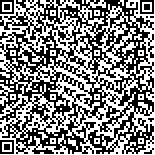孙良文,胡锦荣,黎飞,邵蒙蒙,李海燕,周成业.基于日常生活活动能力的功能性移动训练在脑卒中后偏瘫患者中的应用[J].中华物理医学与康复杂志,2017,39(6):446-449
扫码阅读全文

|
| 基于日常生活活动能力的功能性移动训练在脑卒中后偏瘫患者中的应用 |
| Functional ambulation training based on the activities of daily living in a realistic environment for treating hemiplegic stroke survivors |
| |
| DOI: |
| 中文关键词: 脑卒中 现实环境 功能性移动训练 平衡 日常生活活动能力 |
| 英文关键词: Stroke Environment Functional ambulation training Balance Activities of daily living |
| 基金项目:浙江省温州市科技计划资助项目(Y20150027) |
|
| 摘要点击次数: 2445 |
| 全文下载次数: 3307 |
| 中文摘要: |
| 目的 观察现实环境下采用基于日常生活活动能力的功能性移动训练对脑卒中后偏瘫患者平衡功能、步行能力和信心以及日常生活活动能力的影响。 方法 采用随机数字表法将脑卒中后偏瘫患者32例随机分为试验组和对照组,每组患者16例。对照组采用常规康复训练,试验组在此基础上增加现实环境中的功能性移动训练。于训练前和训练6周后(训练后)分别采用Berg平衡量表(BBS)、功能性步态测试(FGA)、5次坐立试验(FTSST)、起立-行走计时测试(TUGT)、特异性活动平衡信心量表(ABC)及改良Barthel指数(MBI)对2组患者进行评估。 结果 训练后,2组患者的各项指标与组内治疗前比较,均显著改善,差异均有统计学意义(P<0.01)。试验组训练后的BBS评分[(48.63±2.03)分]、FGA评分[(15.00±2.00)分]、FTSST时间[(15.56±3.26)s]、TUGT时间[(14.20±4.07)s]、ABC评分[(56.10±13.40)分]以及MBI评分[(70.56±5.94)分]均优于对照组训练后,差异均有统计学意义(P<0.05)。 结论 在现实环境下采用基于日常生活活动能力的功能性移动训练结合常规康复训练可显著改善脑卒中后偏瘫患者的功能性步态、平衡功能、姿势控制能力和日常生活活动能力,且对其平衡信心也有积极影响。 |
| 英文摘要: |
| Objective To observe the effects of functional ambulation training in a realistic environment based on the activities of daily living among stroke patients with hemiplegia. Methods Thirty-two stroke survivors with hemiplegia were randomly divided into an experimental group and a control group, each of 16. Both groups were given routine rehabilitation training, while the experimental group was additionally given functional ambulation training based on the activities of daily living in a realistic environment for 60 min per day, five days a week for six weeks.Both groups were evaluated using the mini-mental state examination (MMSE),the Holden walking functional class assessment (HWFCA), the Berg balance scale (BBS), functional gait assessment (FGA), the 5 times sit to stand test (FTSST), the timed up and go test (TUGT), and rated using the specific activity balance confidence scale (ABC) and the modified Barthel index (MBI). Results Before the training, no significant differences between the two groups were found in terms of any of the measurements. After the six weeks of training, significant improvement was observed in all of the outcome measures except the MMSE and the HWFCA, with the experimental group scoring significantly better, on average, than the control group. Conclusion When combined with routine rehabilitation training, functional ambulation training based on the activities of daily living in a realistic environment can significantly enhance the functional gait, balance and postural control of stroke survivors. This should facilitate their activities in daily life and improve their confidence in maintaining their balance. |
|
查看全文
查看/发表评论 下载PDF阅读器 |
| 关闭 |